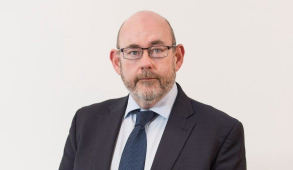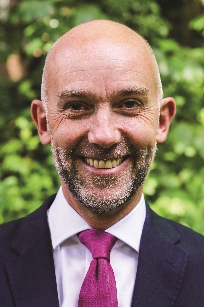Covid-19 update: 11 June
 The 5.12 million on the waiting list at the end of April represents an increase of 170,000 since the March numbers were published a month ago and a 600,000 rise since December. But passing the five million figure is a milestone that will be uncomfortable for the government – representing a doubling of the waiting list over the last decade. A small silver lining is the fact that the numbers waiting over a year have now reduced slightly – down from 436,000 to just over 385,000. However, the one year waiters still represent 7.5% of all those on the list.
The 5.12 million on the waiting list at the end of April represents an increase of 170,000 since the March numbers were published a month ago and a 600,000 rise since December. But passing the five million figure is a milestone that will be uncomfortable for the government – representing a doubling of the waiting list over the last decade. A small silver lining is the fact that the numbers waiting over a year have now reduced slightly – down from 436,000 to just over 385,000. However, the one year waiters still represent 7.5% of all those on the list.
Chris Hopson, chief executive of NHS Providers, said that trusts were ‘going full pelt’ on elective recovery, with operations now at 90% of pre-pandemic levels well above the 75% target they were set. But the growth in the overall waiting list was a ‘really significant problem’.
There were also concerns that some patients were now presenting with more complex conditions due to the disruption caused by the pandemic. The pressures are not confined to the acute sector with mental health, ambulance and community services all facing increased activity. And some hospitals were also grappling with a small spike in Covid-19 cases, particularly in the North West of England.
‘These figures reflect a very busy trust sector operating at full capacity,’ he said. ‘Urgent and emergency care is under particular strain with ambulances responding to 10% more incidents than two years ago before the pandemic. Hospital bed occupancy also remains high with some trusts now running around 95%, levels typically seen during winter pressures.’
He said trusts needed more capacity and the government could commit to this by providing permanent, dedicated funding for discharge to assess programmes. ‘We know that this funding during the pandemic helped free up 30,000 acute beds and improved flow through the system. Its withdrawal would mean increased length of stay for patients, delayed discharges and avoidable readmissions.’
Deborah Ward (pictured), senior analyst at The King’s Fund, pointed out that nearly 3,000 people had in fact been waiting over two years. ‘There’s no quick fix, as the NHS tries to tackle the backlog, manage new patients and cope with staff shortages and an exhausted workforce,’ she said. Patients needed to be given an honest estimate of how long they would have to wait for treatment. And she called for a ‘long-term plan for how to give the NHS the resources it needs to sustainably bring down the backlog and provide support for people who will be waiting longer for care’.
Rising cases
Meanwhile there are growing concerns about how a third peak in virus could disrupt the recovery process. The weekly NHS Test and Trace report said that the numbers testing positive for coronavirus in England had increased by 45% in the week to 2 June. The government’s Covid-19 dashboard shows that cases have continued to rise since then. The 6,201 cases reported on Wednesday 9 June (7,540 across the UK) compares with just 3,486 on 2 June (4,330 across the UK).
At the current rate of growth, the UK will hit 15,000 cases a day by 21 June and January levels of infection by late July. This is without the possible further relaxations planned for 21 June – a decision on which is expected on Monday.
Danny Mortimer, deputy chief executive of the NHS Confederation, said the highest weekly number of new infections since the end of March left the NHS in ‘an extremely precarious position’. ‘Health leaders are all too aware that rising infections, and especially at such a rapid rate, can easily lead to major rises in hospital admissions,’ he said. ‘Even a slight increase in admissions will affect capacity and could put recovery efforts at risk.
‘With 45% more infections week-on-week, pressure is mounting. Covid-19 hospital admissions are already going up and that will put capacity under strain, especially as the latest performance figures showed 5.1 million people are waiting to start treatment,’ he added. He called for the government to ‘be ready to take action’ and push back the 21 June deadline for easing restrictions further.
Hospital admissions are rising slowly. Over the last week for which data is available, the average level of daily admissions was 132 – nine up on the previous week’s average. And the number of Covid patients in hospital is now back above 1,000 for the first time since early in May. Hospitalisations are currently concentrated in some hot-spot areas, such as the North West of England.
However, vaccines minister Nadhim Zahawi said there was clear evidence that vaccines had begun to sever the link between cases of the virus and hospitalisation and deaths. ‘Last week we saw an increase in cases of 63%,’ he told BBC Radio 4’s Today programme on Friday, citing more up-to-date figures than the Test and Trace report. ‘Hospitalisations also went up, but only by 7.1% and deaths only went up by 1.9%. The virus will attempt to survive by mutating. But it can only mutate if it has a population to infect.’ (It should be remembered that hospitalisations tend to lag cases by at least two weeks.)
Association of Public Health Directors vice president Jim McManus (pictured) acknowledged evidence showing the vaccination programme was breaking the link between Covid cases and deaths. ‘However, as new variants begin to take hold, this break is becoming more uncertain,’ he said in a blog on Friday. ‘The complete lifting of measures on 21 June not only risks an increase in cases and hospitalisations, but risks the introduction of new variants to the UK, which will undermine our vaccination programme and derail our path back to normality.’
The increase in positive cases has also meant an increase in cases transferred to the English contact tracing service. There were the usual leakages – some 1,500 of the nearly 20,000 cases in the latest week could not be reached. Of those that were, fewer than 16,000 provided details of close contacts. And 14% of the nearly 63,000 contacts could not be reached and told to self-isolate.
NHS Providers’ Mr Hopson said the figures again show clear room for improvement. ‘Over 5,000 people who tested positive were not transferred into the system,’ he said, ‘and there were also declines in the number of people who were reached and in test turnaround times this week.’
Delta worries
Concerns continue to focus on the Delta variant of the virus – the B.1.617.2 variant originally identified in India. Health and social care secretary Matt Hancock said that 91% of new Covid cases were now the Delta variant. Surge testing was this week launched in Bradford, Canterbury, Maidstone, Kingston and Calderdale on the back of small numbers of the Delta variant being detected, joining a growing number of local authority areas to be targeted with more testing and genomic sequencing.
This week also saw Mr Hancock given the opportunity to share his views on the government’s handling of the pandemic when he appeared before the Commons Health and Social Care Committee and the Science and Technology Committee. One of the key criticisms of the government’s response to Covid-19 was not locking down earlier in the first phase. But Mr Hancock said this would have gone against scientific advice at the time. He said ministers did challenge the advice, but over-ruling the scientists would have been harder.
It was also an opportunity to respond to stinging criticism of him and prime minister Boris Johnson by former government adviser Dominic Cummings, who appeared before the same committees a fortnight ago. In a much less explosive session than that involving Mr Cummings, the health secretary rejected Mr Cummings’ criticisms about failing to protect care homes by allowing the transfer of patients from hospitals without a Covid-19 test. Again, Mr Hancock said ministers had followed the clinical advice at the time, citing clinical concerns about people picking up the virus in hospital while waiting for results.
He insisted the policy was for people to be tested when tests were available and that he set about building the testing capacity to be able to deliver on that. He claimed to have no idea why Mr Cummings had a vendetta against him and said it was ‘telling’ that the former adviser had been unable to provide evidence to back up his claims.
Mr Hancock also defended the government’s performance on personal protective equipment (PPE) in the early months of the pandemic. He claimed that ‘there was never a point at which NHS providers couldn’t get access to PPE’. He referenced a National Audit Office report, which said that, while NHS providers spoken to had been concerned about low stocks of PPE, they said ‘they were always able to get what they needed in time’. However, the report went on to say that this ‘was not the experience reported by many frontline workers’.
Labour shadow social care minister Liz Kendall (pictured) said Mr Hancock’s evidence was ‘at best disingenuous’ and that he had ‘selectively used briefings, evidence and clinical advice’ to defend his record on the protection of care homes.
‘The government was much too slow to act to protect residents and staff,’ she said. ‘As we emerge from this pandemic, ministers must put in place a plan to transform social care and ensure that care homes never again face a crisis of this scale.’
Nearly 80% of UK adults have now received a first dose of vaccine with 55% also having received their second dose. Wales leads the UK nations in terms of vaccination with 87% of eligible adults receiving a first jab and 52% fully vaccinated. Audit Wales acknowledged this ‘phenomenal achievement’ but, in a new report, called for a longer-term plan to meet future challenges. ‘The job is far from done,’ said auditor general Adrian Crompton (pictured). ‘A longer-term plan is needed that moves beyond the existing milestones and considers key issues such as resilience of the vaccine workforce, evolving knowledge of vaccine safety, the need for booster doses, and maintaining good uptake rates – especially in those groups that have shown some hesitancy in coming forward for their vaccinations.’
Meanwhile in England, an extra £20m is being provided to integrated care systems and sustainability and transformation partnerships to support primary care providers to draw down additional staff through their lead employer to help deliver the vaccination programme into July.
World challenge
As the week ended, G7 leaders from the world’s most advanced economies were beginning their three-day meeting in Cornwall. Having already unveiled an agreement aimed at making multinational companies pay more tax, the agenda will cover Covid recovery, climate change and trade – but increasing vaccination rates across the globe will be a chief concern.
Ahead of the meeting, the prime minister announced that the UK will donate 100 million surplus coronavirus vaccine doses to the world within the next year – five million by the end of September, 25 million more by the end of the year and the balance next year. Some 80% of the doses will go to the Covax initiative, with the remainder shared with countries in need.
The United States has also committed to provide 500 million doses of the Pfizer/BioNTech vaccine to about 100 countries over the next two years. The two donations will form part of a one billion dose commitment expected to be announced by the G7 leaders.
However, there are concerns that the commitments do not go far enough, with the world needing an estimated 11 billion doses to achieve a 70% vaccination level. Save the Children executive director of policy and advocacy and spokesperson for the Crack the Crises charities coalition Kirsty McNeill, said the G7 countries needed to share three things. ‘Share the patents and the know-how about how to manufacture vaccines,’ she said. ‘Share the doses – and we’ve seen a good start on that – but crucially they need to share the bill.’ She added that it was on vaccine financing that the summit would be judged, with the bill for vaccinating the world likely to be between $50bn and $66bn dollars.
Related content
We are excited to bring you a fun packed Eastern Branch Conference in 2025 over three days.
This event is for those that will benefit from an overview of costing in the NHS or those new to costing and will cover why we cost and the processes.